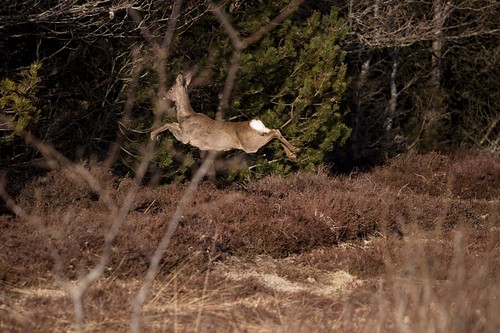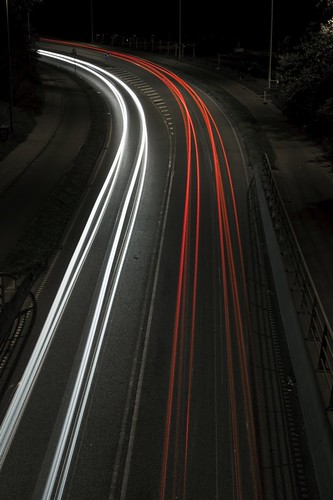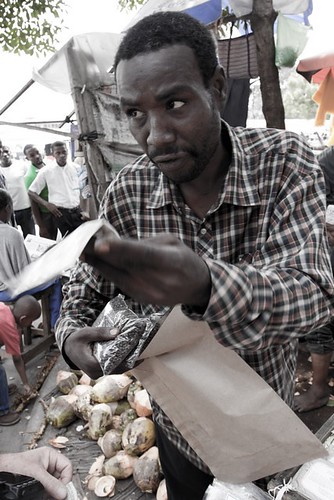Basic camera technique - part one of three
By Michael Munk
By Michael Munk
This will be the first description of the three elements; shutter speed, aperture and ISO speed, that I previously introduced in ”The exposure triangle”.
Before I get started I have two notes for this article. I have given the EXIF informations (Exchangeable Image File Format) for the example images pay attention to these for better understanding. And you can simply click the images for a larger view.
The definition of Shutter speed: a common name for exposure time –the effective length of time that the shutter inside the camera is open. Consequently the time light is allowed to reach the camera censor and creating the image.
To control separate parts of “the exposure triangle” you have to leave auto-mode and use either Priority- or Manual-mode. To achieve this turn the “camera mode dial” (on top of the camera) to:
- Shutter-priority: “Tv” or “S”depending on camera type (Time value/Shutter-priority).
- Manual-mode: “M” (manual)
The shutter speed is measured in seconds – often in fractions of a second.
On most modern cameras you can choose between many steps of shutter speeds. To outline this “scale” and give you a better overview I have picked some main points and given a short description and some useful situations. Starting with the fastest shutter speed.
1/16000th s: The absolute fastest shutter speed available (only available on the top models)
1/8000th s: Fastest shutter speed for most DSLR cameras. Useful for getting racer sharp images of moving objects (animals, cars etc.). Requires good light conditions, a large aperture (lots of light) and probably push the ISO number up (larger than ISO 100).
1/2000th s: A fast shutter speed to capture fast moving objects in normal light (overcastted summerday)
1/250th s: To freeze normal day picture like humans and buildings. This speed also allows a small aperture (f/11) and therefore a good depth of field (DOF). I will explain this in the following article about aperture.
1/60th s: Slower shutter speed that doesn’t freeze object instead gives a motion blur. Useful in making panning images and getting a small aperture (f/9-f/16) for great landscape shoots with a good DOF.
1/8th s: Longer exposure which allows the possibilities of creating great motion blur effects. Another use of these slower shutter speeds is, in combination with tripod, bean bag or other camera support (rocks, bag…), to get pictures of immobile object or landscapes in low light conditions.
1 s: “Only” (I don’t want to kill creativity! There are NO such things as rules, “only when”, “don’t do this, “you can’t do that”… etc. ALWAYS BE CREATIVE AND EXPLORE NEW WAYS!) with use of tripod for low light photography.
30 s: Longest shutter speed in most DSLR cameras. Used in night photography – long exposure.
BULB: Keeps the shutter open as long as the shutter release is hold. With a remote control only battery life limits the exposure time. This can be used in star trail photography (30min – infinity). Low light photography is one of my favorite subject areas and I will return to this.
If you want sharp images “a rule of thumb” is to use a shutter speeds that is greater than the focal length you are using. Let us take an example to understand this rule.
- If you shoot at 40mm keep the shutter speed higher than 1/40th sec.
- But if you shoot at 200mm you should go faster than 1/200th sec. (1/200th – 1/8000th sec.)
In theory this is a good rule but in practice
you will be using shutter speeds of 1/60th of a second or faster
Again we need to look at light to find an explanation. Because at 1/60th sec. or slower there is a great risk of camera shake. Which results in blurred or out of focus images. Simply because a handheld camera will move during exposure (changing the “light picture” the camera “sees”).
As I said you can prevent this by stabilizing the camera (using tripod, bag, rock…)
Don’t forget the exposure triangle – a change in one setting will affect the others (ISO and Aperture)
I am afraid the next few lines will get extremely technical so feel free to skip this and read the examples instead.
· Halving the shutter speed - doubles the exposure (1 EV more)
· Doubling the aperture (halving the f/”number”) – increases the exposure by a factor 4 (2 EV more)
That explains the fact that standard apertures differ with about 1.4
Let us take an example:
A picture taken at these three different settings will look almost the same regarding exposure (in relation light).
We double the shutter speed (less light manage to reach the censor). To compensate for this we make a bigger opening in our lens with a smaller aperture (remember the window metaphor: “draw back the curtains”)
- 1/125th and f/11
- 1/250th and f/8
- 1/500th and f/5.6
I will give a more detailed explanation of the use of this in a future article.
Enough with all the technical nonsense for now! Let us look at something more tangible instead.
Questions you should ask yourself before choosing a shutter speed
1. Plain and simple: "What am I photographing?"
"What is the motive?"
"What is the motive?"
"Are there any moving objects?"
If yes, then:
2. Do I want to freeze these objects – make then look still?
3. Or do I want to make a blur effect on purpose – creating a sense of movement.
© Copyright by MunkPhotography.com
Exposure: 1/10
Aperture: f/4.0
ISO 100
Focal length: 160mm
Many people want all their photos to be as sharp as possible. I agree that a lion portrait with extremely sharp focus right in the eyeball can give you great pleasure to look at.
BUT on the other hand a well done motion blur can generate a special atmosphere, or tell an amazing story which would have been lost in a racer sharp image.
When you have shot your perfectly sharp image - DO look for alternative options - be creative! You might get even better images with unusual settings, or at least get some priceless experience!
© Copyright by MunkPhotography.com
Exposure: 1/25
Aperture: f/7.1
ISO 100
Focal length: 17mm
When you have shot your perfectly sharp image - DO look for alternative options - be creative! You might get even better images with unusual settings, or at least get some priceless experience!






Ingen kommentarer:
Send en kommentar